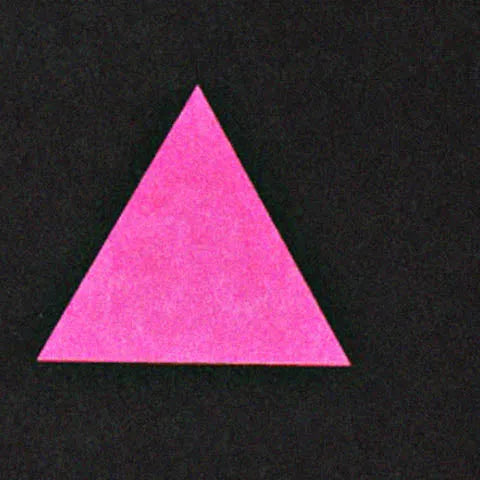
SILENCE = DEATH: THE UNFORGETTABLE SLOGAN

In the 1980s, the AIDS epidemic devastated the gay community in America. As the deadly virus spread unabated, fear and misinformation compounded the tragedy. Many gay men afflicted with AIDS faced not only sickness and death but also discrimination and abandonment. Out of this crisis emerged one of the most iconic slogans of the 20th century—"Silence = Death"—encapsulating the stakes of the epidemic and spurring activism.
The Roots of an Epidemic

AIDS (Acquired Immune Deficiency Syndrome) first appeared in America in the early 1980s, as doctors noted unusual illnesses among gay men in Los Angeles, New York, and San Francisco. These men exhibited rare cancers and pneumonia typically only seen in those with severely weakened immune systems. The mysterious illness was initially dubbed GRID (Gay-Related Immune Deficiency) as the gay community appeared impacted disproportionately. In 1982, the illness was re-termed as AIDS as groups like hemophiliacs (Hemophiliacs are individuals who have hemophilia, a rare genetic disorder affecting their blood's ability to clot properly.) became infected, indicating additional means of transmission beyond sexual contact.
However, the timeline of the HIV and AIDS epidemic indicates that by 1983, a significant number of AIDS cases had been reported in the United States, with 1,450 cases and 558 deaths documented by May 25, 1983 Yet information remained scarce, with many questions surrounding how exactly AIDS spread and manifested. The lack of answers bred myths and false assumptions. Some alleged AIDS could be infected through casual contact like saliva or tears. Others condemned the sexual liberties of gay men, implying victims deserved such divine punishment.
Amid the uncertainty and stigma, the White House offered no meaningful assistance. President Ronald Reagan did not publicly address AIDS until 1985 as fatalities mounted. Federal health agencies were slow to research AIDS' origins, spread, and treatments. Gay advocates grew increasingly incensed by governmental inaction from health agencies, law enforcement discrimination against AIDS victims, and silence from peers unwilling to discuss safe sex openly. Activists perceived governmental and societal indifference as tantamount to wishing death upon gay men with AIDS. Out of this boiling frustration came the iconic "Silence = Death" poster in 1987.
The Origin of "Silence = Death"

In January 1987, six New York gay rights activists formed the Silence = Death Project to raise AIDS awareness through provocative visual graphics. The collective—comprised of Avram Finkelstein, Brian Howard, Oliver Johnston, Charles Kreloff, Chris Lione, and Jorge Soccarás—sought to jolt gay men and the world at large out of complacency over AIDS. Their first poster featured a pink triangle with "SILENCE = DEATH" beside it in bold white block letters on a black background.
The pink triangle invoked the badges required of gay men interned in Nazi concentration camps, co-opted as a symbol of gay rights after WWII. Against this icon, the slogan compellingly framed governmental, societal, and personal inaction over AIDS deaths as lethal complicity. Printing thousands of posters, the activists wheat-pasted the graphic across New York City and beyond. The inescapable poster and its searing message quickly became ubiquitous in gay enclaves nationwide and internationally. The unforgettable slogan and the activism it inspired radically shaped AIDS discourse for decades to follow.
The Impact of "Silence = Death"

The "Silence = Death" poster fundamentally altered how Americans viewed the AIDS epidemic and their role within it. The stark message left no room for ambivalence—to avoid discussion of safe behaviors and to ignore the plight of afflicted gay men was murderous. The slogan simultaneously conveyed gay men's anger toward those who abandoned them to disease and death as well as the life and death-urgency of activism.
Within the gay community, the poster played a major role in promoting safe sex practices and openness about AIDS. While uncomfortable, discussing AIDS, infection rates, and sexual activity was positioned as a matter of life or death. Outside the gay community, the memorable slogan built an understanding of AIDS' severe human toll and spread awareness of governmental negligence. More Americans wrote their legislators, donated time and money to health initiatives, and understood AIDS as a crisis needing action from the highest levels on down.
Groups like ACT UP (AIDS Coalition to Unleash Power) embraced the slogan in their high-profile demonstrations against profiteering pharmaceutical executives, government foot-dragging, and societal homophobia. Media coverage of mass civil disobedience invoked "Silence = Death" on the nightly news and in newspaper accounts, imprinting the slogan into the public consciousness.
Over 30 years, the concise phrasing and imagery of "Silence = Death" has retained its emotional power and clarity of message. In December 2016, the slogan was enshrined in protest history with the opening of a "Silence = Death" exhibition at the Leslie-Lohman Museum of Gay and Lesbian Art in New York City. As curator Hunter O'Hanian declared, even in the age of antiretroviral treatments, "Its rallying cry is as relevant today as the moment it was created."
The Enduring Legacy

The creators of "Silence = Death" harnessed activist graphic design to awaken the world to governmental negligence and public misconceptions enabling the deaths of gay men to AIDS. In just a few words paired with memorable imagery, this slogan laid bare the high stakes apathy around this health crisis posed to thousands nationwide and compelled action from many levels to combat AIDS.
Over 30 years, "Silence = Death" remains a concise, yet monumental, slogan—embodying gay men's trauma and anger during a horrific epidemic as well as the activist defiance that alleviated suffering and saved lives. Though conceived in a crisis, the slogan survives as an enduring reminder that activism and agitation are necessary responses to institutional failures threatening marginalized groups. When it comes to issues of life and death, silence will always equal death—the only hope lies in openness, action, and continued struggle against callous indifference.









